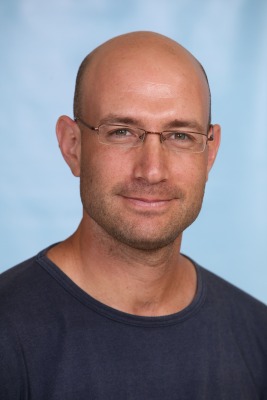I am a lecturer in the Institute of Archaeology, in the Biblical division. My research interests revolve around environmental and landscape archaeology, especially of marginal landscapes; archaeological surveys and spatial analysis; regional archaeology in the Judean Desert; human activity in natural caves; and the development of complex societies in the southern Levant (Chalcolithic period and Early Bronze Age). My current studies include settlement dynamics in the Upper Galilee in the Early Bronze Age and early urbanization in the southern Levant, involving multi-annual excavations at the mega-site of Tel Qedesh; archeology and landscape of refuge in cliff caves of the Judean Desert during the Chalcolithic and Early Bronze Age; environmental and cultural changes in the Judean Desert during the Holocene (together with Dr. Nimrod Marom, University of Haifa); and comparative archaeology of ancient activity patterns in complex caves in the southern Levant.
Active Projects
Settlement Complexity and Upland-Lowland Interactions in Early South Levantine Urbanism: Tel Qedesh and the Galilee in the Early Bronze Age. The research addresses social complexification processes during the Early Bronze Age (EBA; c. 3800-2500 BCE) in Northern Canaan based on two complementary investigations: delineating the structural and socio-economic development of a recently-identified mega-site at Qedesh in the Upper Galilee, probably the largest 'urbanized' EBA site in the Southern Levant; and computational analysis of EBA settlement systems at a multi-regional level, encompassing the northern Coastal Plain, the Galilean Highlands and the northern Jordan Valley. The study, supported by a five-year research grant of the Israel Science Foundation (no. 1534/18, 2018-2023), includes the multi-annual excavations at the site of Qedesh, in collaboration with Dr. Ido Wachtel.
Archaeology and Landscape of Refuge - The Judean Desert During the Chalcolithic and Early Bronze Age. The social significance of violent conflicts in pre-urban societies is a frequent theme in the archaeological discourse, addressing fundamental subjects such as the evolution of social stratification and accumulation of power. A common feature of past conflicts whose archaeological identification poses great methodological challenges is forced displacement, or refuge. This study is based on comparative analyses of environmental, structural and material aspects of the cliff caves of the Judean Desert related to several episodes of occupation during the Late Chalcolithic period (c. 4200-3800 BCE) and the Early Bronze Age IB (c. 3300-3100 BCE) interpreted as chapters of temporary refuge. The research emphasizes the advantages, as well as methodological and interpretive complications, of the archaeological record in marginal landscapes for the identification of veiled human behaviors.
Environmental and Cultural Changes in the Judean Desert during the Holocene. The study focuses on the changes in the regional ecosystem of the Judean Desert in relation to periods of prosperity and decline in human activity in this region, and En Gedi Oasis in particular. This study entails the collection and analysis of biological data from a 40+ caves in the southern Judean Desert, alongside detailed archaeological and environmental research at main foci of human activity in En Gedi from three main periods - Chalcolithic, Iron Age and Roman-Byzantine. The research is a joint endeavor of the University of Haifa and HUJI, and is funded by the European Research Council (ERC-Stg grant no. 802752 to Dr. Nimrod Marom).
Activity Patterns of Early Complex Societies in Composite Caves in the Southern Levant. The archaeology of natural caves around the globe is usually associated with the study of hunter-gatherer societies. Nonetheless, caves continued to form an integral part of human landscapes well after the Neolithic revolution. While composite karstic systems were not used as permanent habitations, their dark, remote and unique landscapes were often selected for diverse off-settlement activities, including burial, ritual and refuge. The highlands of the southern Levant, from the Upper Galilee to the northern Negev, are built of a thick sequence of Late Cretaceous sedimentary rocks that host numerous karstic caves of varied morphologies. Since the late 1970’s these caves are studied by the Israel Cave Research Center (ICRC, Institute of Earth Sciences, HUJI), which discovered and documented numerous composite caves containing archaeological remains dated from the late prehistoric sequence of the southern Levant (Late Neolithic – Intermediate Bronze Age). However, only a handful of these caves were systematically studied by archaeologists (e.g., Nahal Qanah). During the last decade we conducted systematic surveys in dozens of composite caves in most highland regions of Cisjordan, and currently we focus on comparative chronological, spatial and material analysis of the results, with the ultimate goal of portraying the role of composite caves in the making of late prehistoric societies in the southern Levant.

